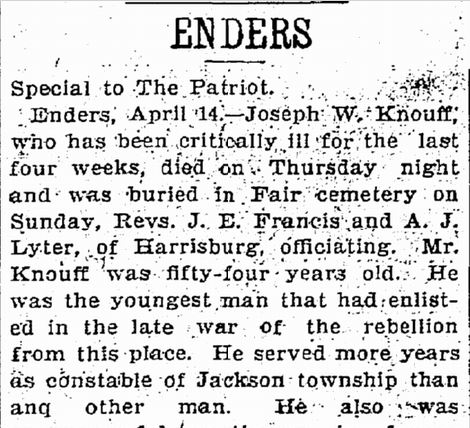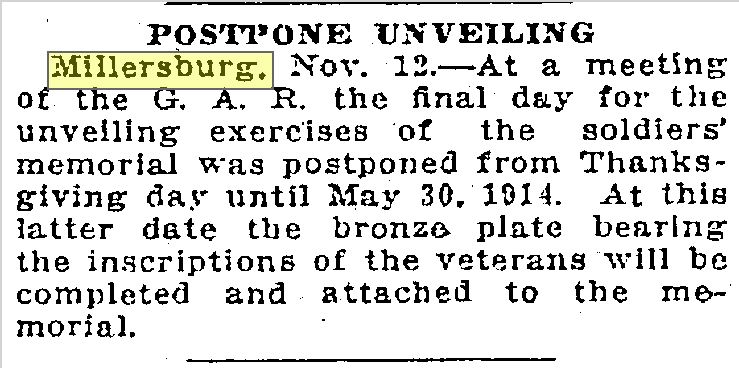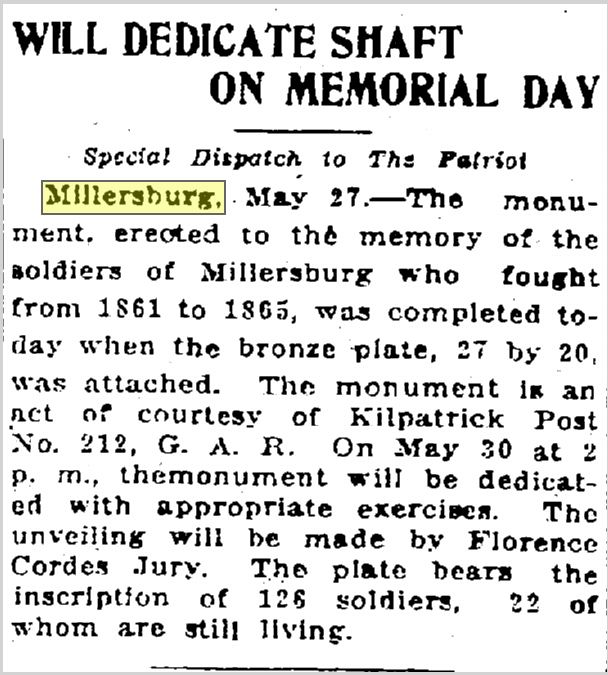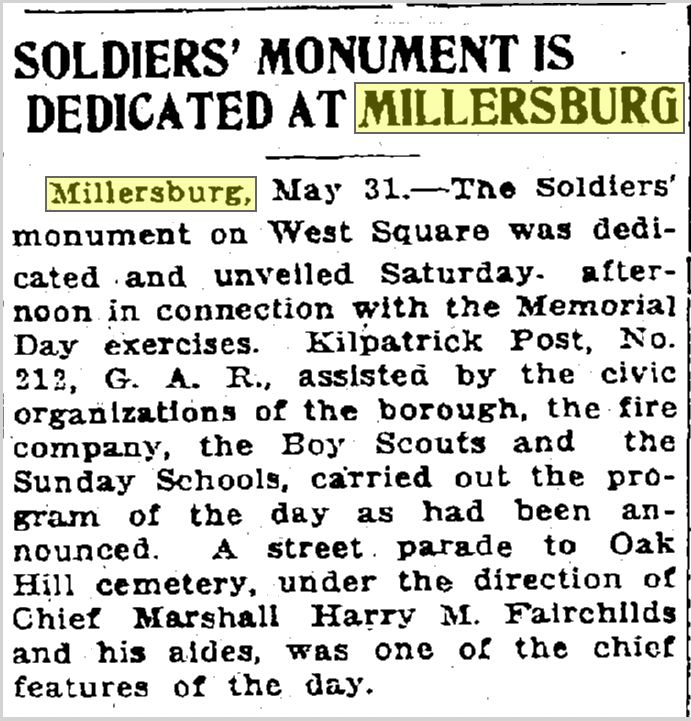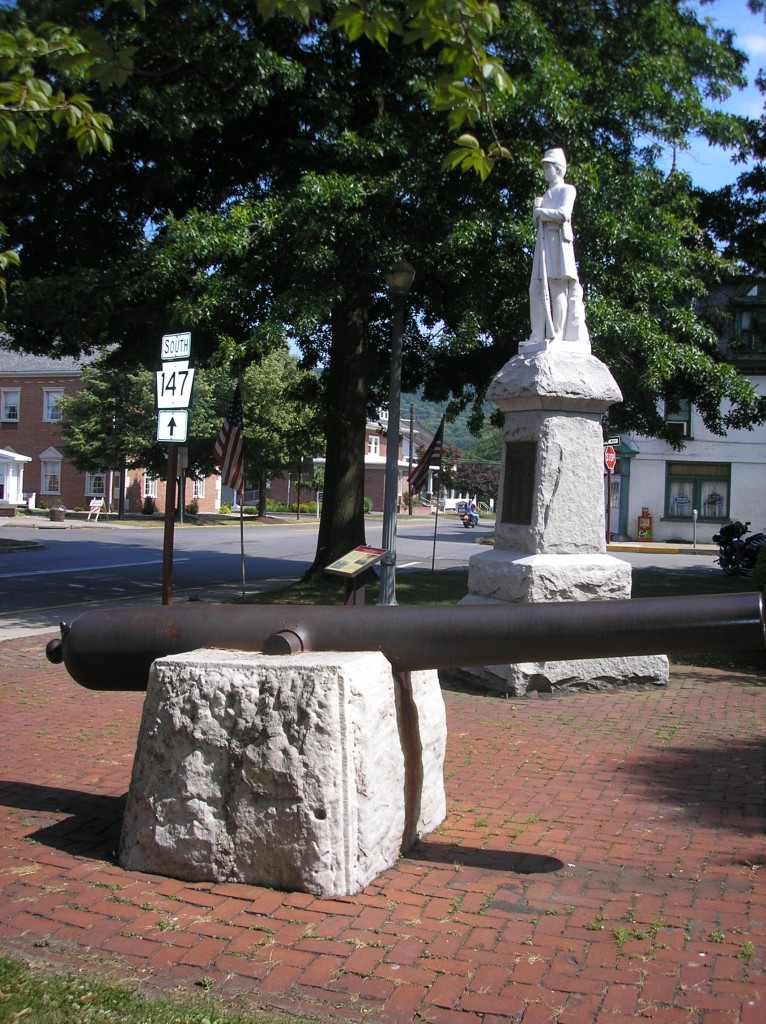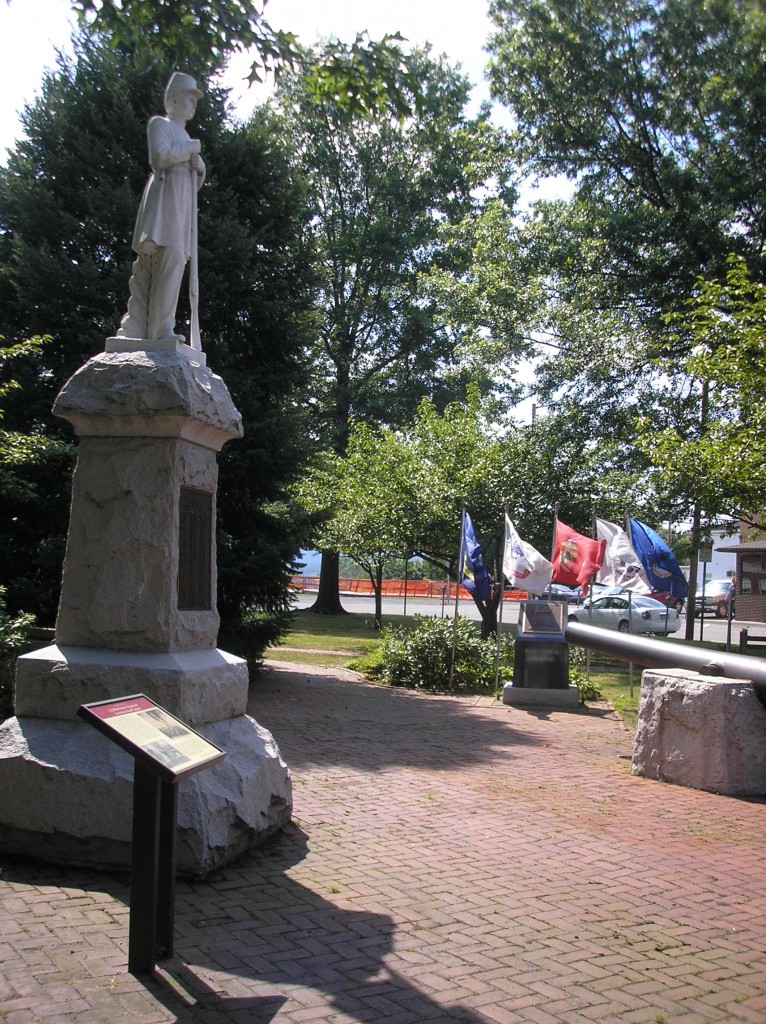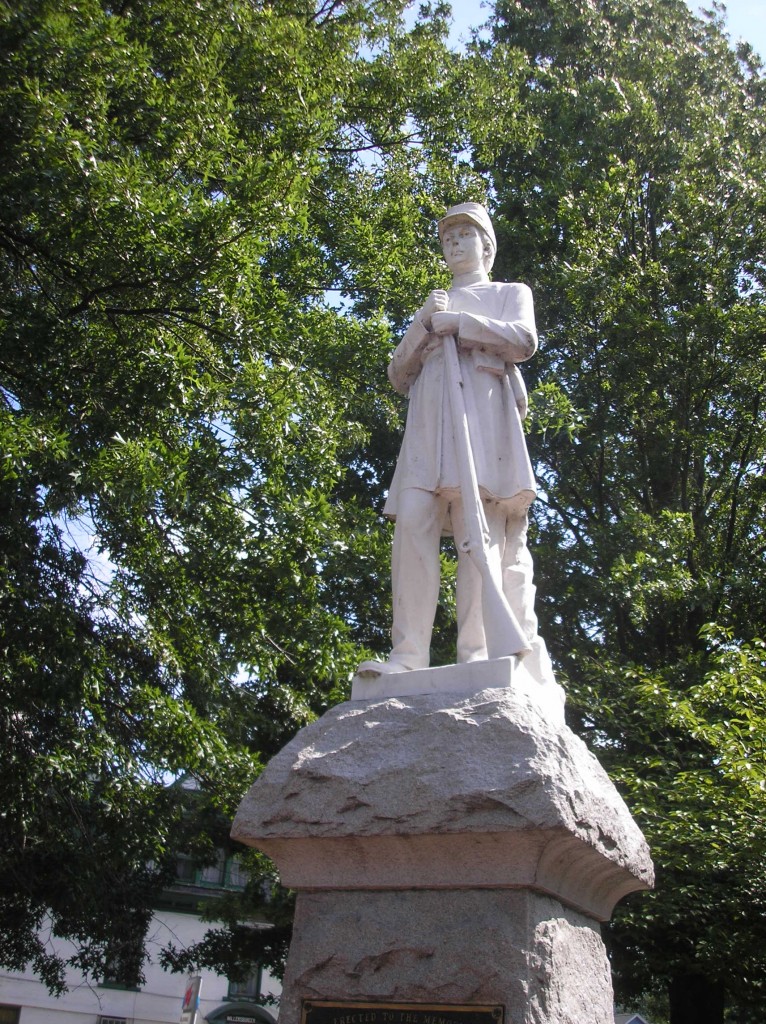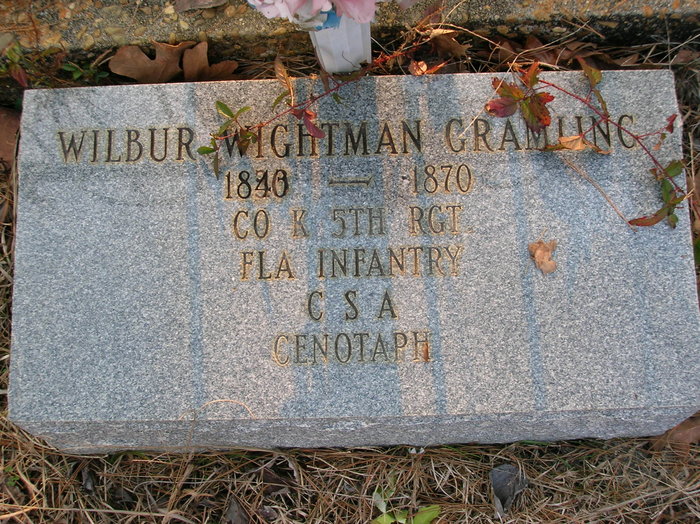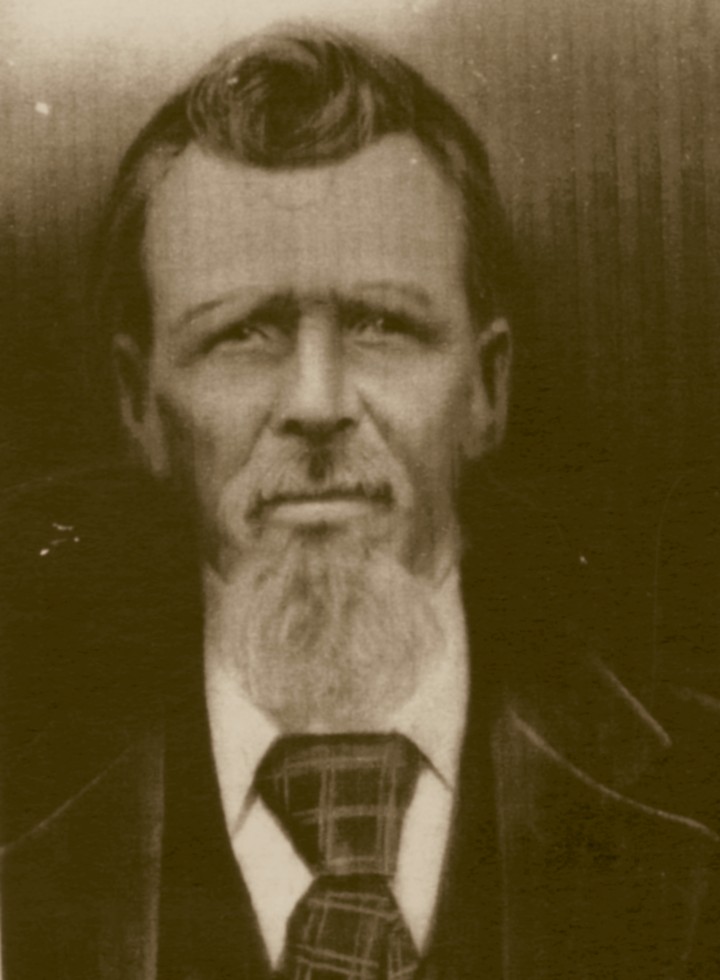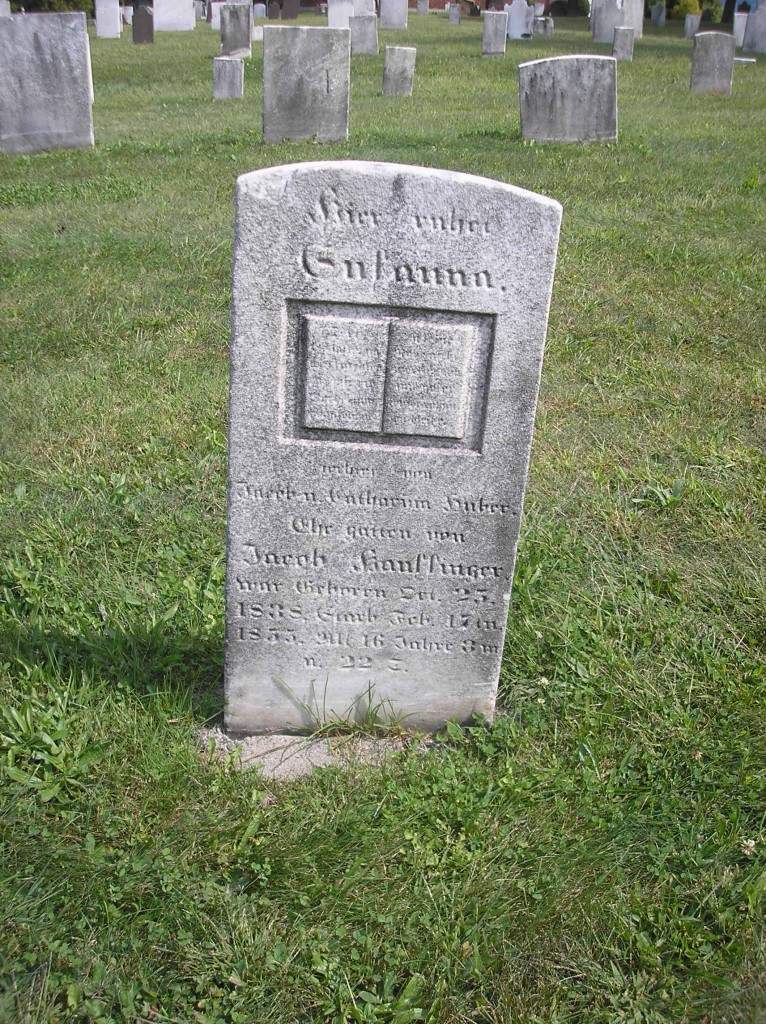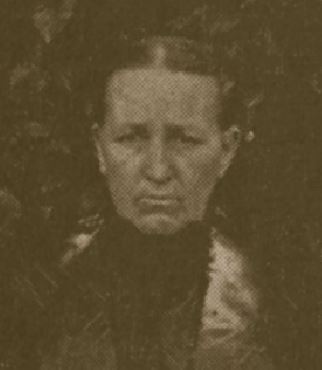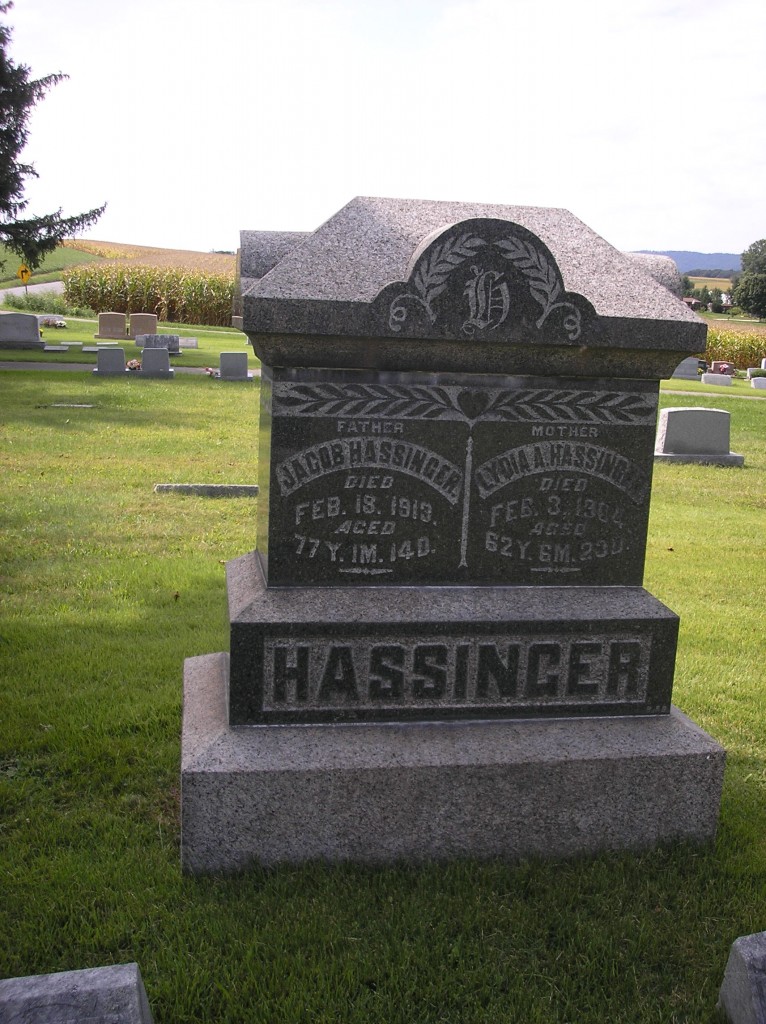Posted By Norman Gasbarro on May 24, 2014
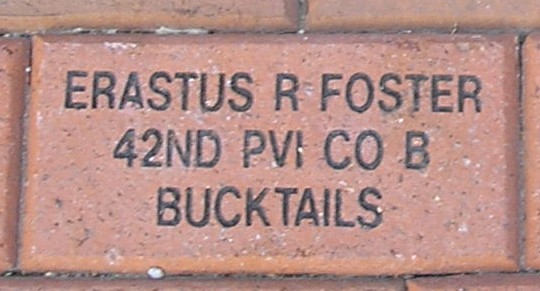
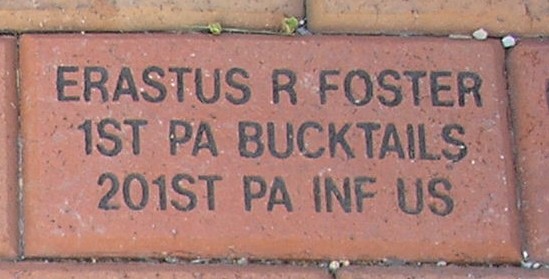
In 2009, while doing research on the Civil War veteran named Erastus R. Foster who lived in Duncanon, Perry County, Pennsylvania, and in his late years in Lykens, Dauphin County, Pennsylvania, it was discovered that there were possibly two men of the same name who served in different regiments in the Civil War. Known at that time was that a biographical sketch had appeared in Captain Enders Legion, which gave the regiments as the 42nd Pennsylvania Infantry and the 67th Pennsylvania Infantry. Shorty after that, while photographing the memorial bricks on the Walk of Valor at the National Civil War Museum, different inscriptions were noted – including one which stated that Erastus R. Foster served in the 201st Pennsylvania Infantry and the 1st Pennsylvania Bucktails. Recent research has confirmed that there were two different men of this name – and that the information in Captain Enders Legion was in error.

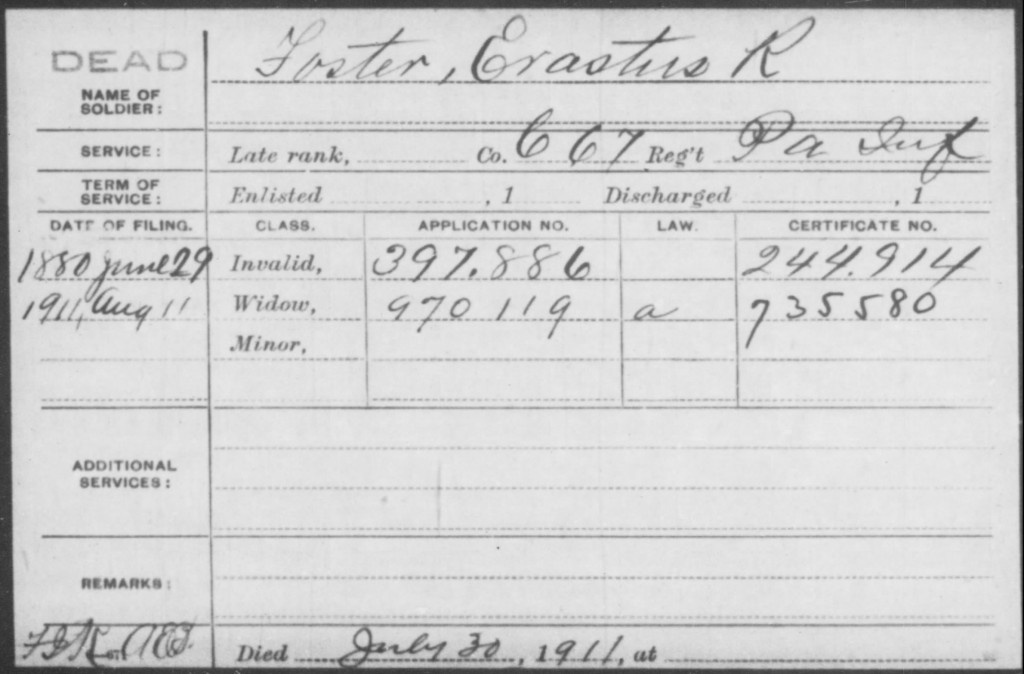
The two Pension Index Cards (from Fold3) shown above are one of the most helpful indicators in separating the two men named Erastus R. Foster. On the top card, the death date is clearly given as 9 February 1902. That individual served in the 42nd Pennsylvania Infantry, Company B (also known as the 1st Pennsylvania Bucktails and the 13th Pennsylvania Reserves) as well as the 201st Pennsylvania Infantry, Company K. On the second card, the death date is clearly given as 30 July 1911, and the service for this veteran was in the 67th Pennsylvania Infantry. There are also different dates given for the pension application and on both cards, there is a widow’s application. Referring to the bricks at the top of this post, they both reference the same person in that the 1st Pennsylvania Bucktails is the same as the 42nd Pennsylvania Infantry. The bricks were probably donated by different family members – and the one donated for just the 42nd Pennsylvania Infantry did not know that their ancestor had also served in the 201st Pennsylvania Infantry.
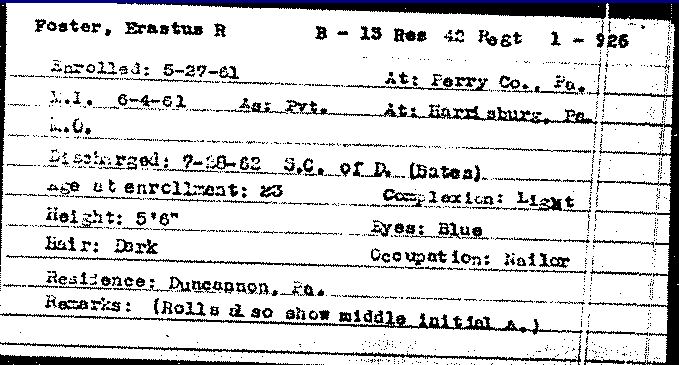
The 23 year old Erastus R. Foster, from Duncannon, Perry County, Pennsylvania, enrolled in the 42nd Pennsylvania Infantry (also known as 13th Pennsylvania Reserves), Company B, as a Private, on 27 May 1861 and was mustered into service at Harrisburg, 4 June 1861. He stood 5 foot, 6 inches tall, had dark hair, light complexion, and blue eyes. He gave his occupation as nailor. He was discharged from this regiment and company on 28 July 1862 on a Surgeon’s Certificate of Disability. The Veterans’ Index Card shown above is from the Pennsylvania Archives and gives that information.
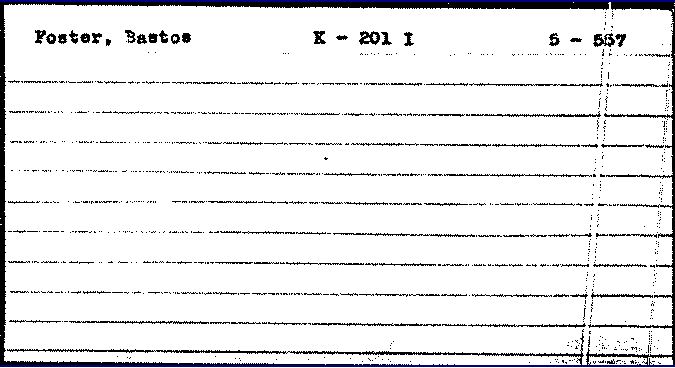
The second card (shown above) is for the 201st Pennsylvania Infantry, Company K, and refers to the veteran as “Bastos Foster.” Although not mentioned on the card, he was mustered into service on 25 August 1864 and served until he was discharged with his company on 21 June 1865.
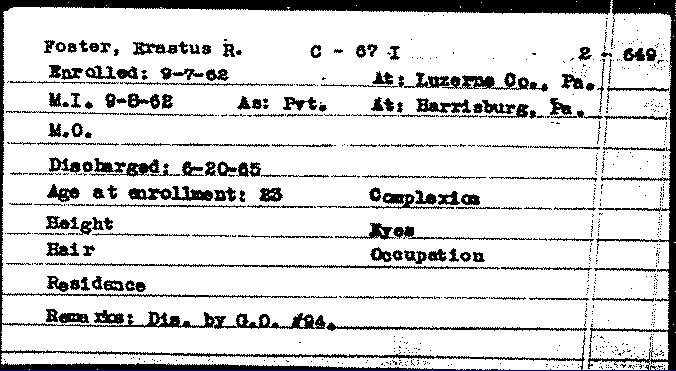
The Veterans’ Index Card for the other Erastus R. Foster, notes that he enrolled in the 67th Pennsylvania Infantry, Company C, as a Private, at Luzerne County, Pennsylvania on 7 September 1862 at age 23, was mustered into service at Harrisburg, and served until discharge on 20 June 1865. He was discharged by General Order No. 94. There is no physical description given in this record.
Captain Enders Legion, page 78-81, gives the following correct information about the Erastus R. Foster who served in the Bucktails:
On 4 Jun 1861, Erastus enlisted in the 42nd Pennsylvania Volunteer Infantry “Bucktail” regiment, Company B for a term of three years at Camp Curtin, Harrisburg, Pennsylvania. The men of this regiment were mostly lumbermen who came clad in their red flannel shirts, bearing their trusty rifles and wearing each in his hat, a bucktail. No one was accepted, who did not prove himself a skilled marksman. On 21 June, the regiment was ordered to report to Cumberland, Maryland and the 42nd from this point on, would be engaged with the Confederate forces on a constant basis. Their first skirmish was at New Creek Village, Virginia on 12 July against McDonald’s Confederate Cavalry with 8 killed and 16 wounded. Another engagement was near Hunter’s Mill, Virginia when they drove a large force of Louisiana Zouaves to retreat, during a sharp skirmish. Shortly thereafter, another vicious skirmish was at Dranesville, Virginia, where the enemy was met in force. During the period 25 May through 6 Jun 1862, the 42nd, as part of General Reynold’s First Brigade, performed brilliant service and created a memorable period in their history, in the pursuit of General Stonewall Jackson up the Shenandoah Valley. On twelve successive days, during seven of which they were constantly engaged with the enemy, they marched nearly twenty miles a day. During this period of intense fighting, Erastus was hospitalized and on 28 July 1862, he was discharged on a Surgeon’s Certificate with the rank of Private.
At this point in the narrative, Captain Enders Legion departs from discussing the one Erastus and switches in error to the other – the one who served in the 67th Pennsylvania Infantry.
Erastus R. Foster, who lived for a short time in the household of his son Elmer in the Lykens Valley, and worked as a laborer in a coal mine (Census of 1900) was born 5 May 1838 in Virginia. He married Mary E. Shearer in 1859 in Duncannon. The couple had at least nine children. Elmer Ellsworth Foster, mentioned above, was born about 1866. George W. Foster, was born about 1871. Erastus died on 9 February 1902 while visiting his son George and was buried in Duncannon Union Cemetery. Mary died in 1905.
The obituary of Erastus R. Foster appeared in the Harrisburg Patriot on 11 February 1902:
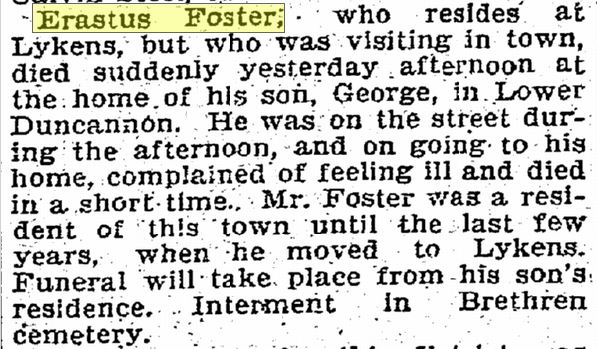
Erastus Foster, who resides at Lykens, but who was visiting in town, died suddenly yesterday afternoon at the home of his son, George, in Lower Duncannon. He was on the street during the afternoon, and on going to his home, complained of feeling ill and died in a short time. Mr. Foster was a resident of his town until the last few years, when he moved to Lykens. Funeral will take place from his son’s residence. Interment in Brethren Cemetery.
Noticeably absent from the obituary was Erastus’ Civil War service. It also must be said that the name of Erastus R. Foster does not appear on the Lykens G.A.R. Monument.
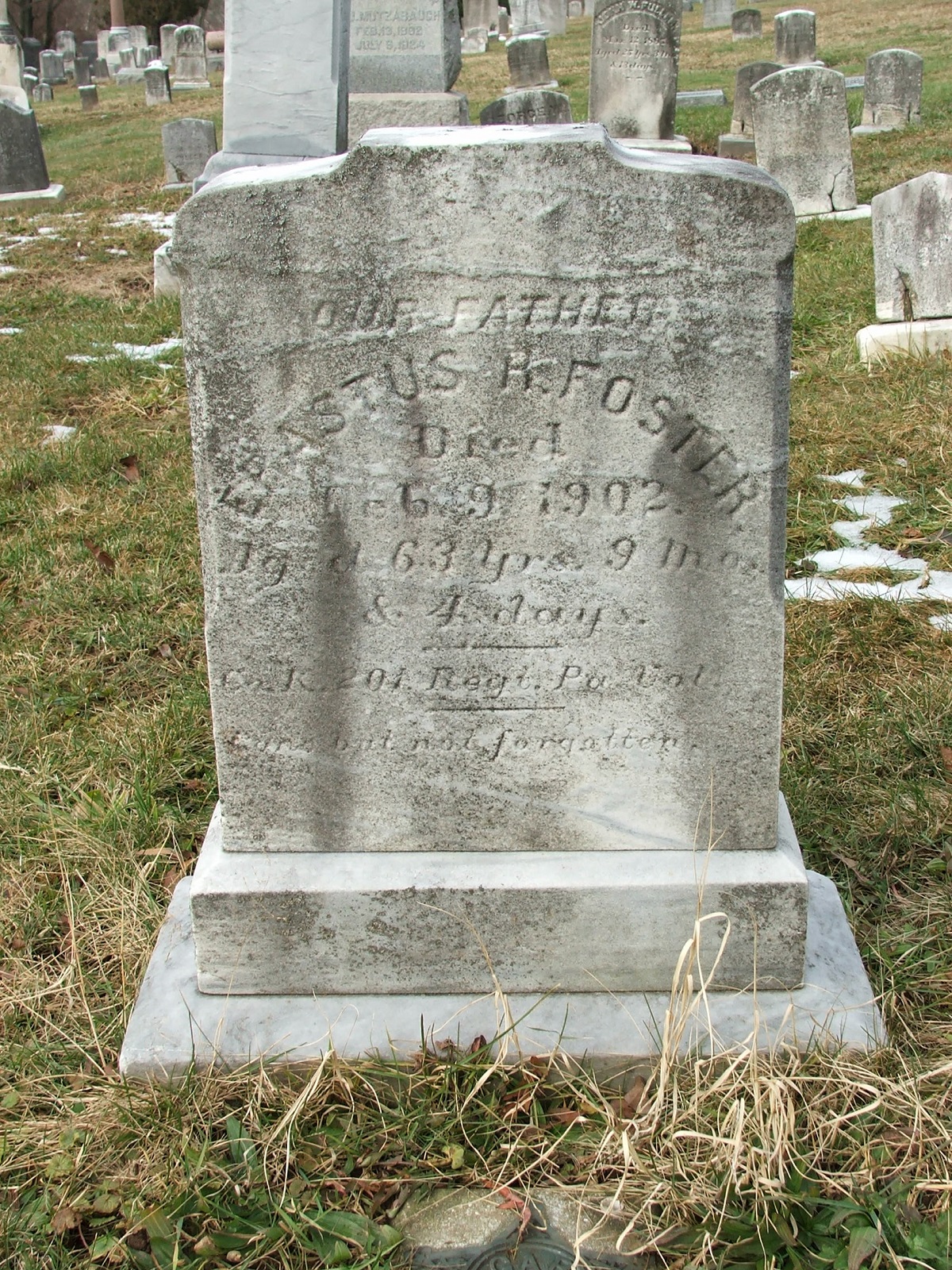
On the grave marker at Duncannon Union Cemetery, only the 201st Pennsylvania Infantry is mentioned for his Civil War service.

Click on document to enlarge.
In his pension application, Erastus R. Foster gave his disability as “rheumatism caused by exposure” (while serving in the Bucktails), and “scurvy caused by eating salty pork” (while serving in the 201st Pennsylvania Infantry).
As for the other Erastus R. Foster, who served in the 67th Pennsylvania Infantry, he is probably the same person who is buried at the Cottrell Family Cemetery, Ararat, Susquehanna County, Pennsylvania (see Findagrave), and was married to a woman named Jerusha. He was living in Ararat in 1900 and working as a farmer. At that time, he had been married for 33 years and had no children.
His military record, as was given in Captain Enders Legion, was as follows:
On 8 September 1862, Erastus [enlisted] in the 67th Pennsylvania Volunteer Infantry Regiment, Company C, for [a] three year term, Company C was recruited in Pike and Wayne Counties and reported to Camp Parole near Annapolis, Maryland. During the period that the 67th was on duty there, drill and discipline were strictly attended to and a high degree of proficiency attained. In February 1863, the regiment numbering 900 men was relieved and proceeded by rail to Harper’s Ferry. It was later transferred to Berrysville where it joined the 3rd Brigade under General Mailroy’s command. The first major engagement with Confederate forces was at Winchester, Virginia from 13 to 15 June. A severe engagement ensued and the 67th found itself completely overpowered and surrounded on all sides and forced to surrender. Many of the officers and men of the 67th were able to escape and make it back to the Union lines. The regiment was re-organized at Harper’s Ferry and was engaged in fortifying Maryland Heights. In Oct 1863, the regiment went into Belle Plain and later had a skirmish with Confederate cavalry near Charles City Court House on 17 June 1864. On 23 June at Ream’s Station, a point on the Weldon Railroad, buildings and portions of track were destroyed. On 6 July, the regiment moved to City Point and embarked upon transports to Baltimore. In early September, the “Army of the Shenandoah” was lying at Clifton, three miles from Berryville under the command of General Sheridan. They moved on to Winchester and on the 19th, the battle raged and they drove Confederate General Early’s forces to his stronghold at Fisher’s Hill, just back of Strasburg. The next day, Sheridan’s Army overran Early’s Army and they fled in scattered fragments into Luray Valley. The 67th was in position on the skirmish line and a daybreak the whole Army advanced, but the enemy had disappeared and at Harrisonburg, Sheridan rested! The 67th numbered just 400 or so, but remained in the valley until late December and then rejoined the Army in front of Petersburg. The regiment ended up at Appomattox Court House on 8 Apr 1865, when General Lee surrendered to general Grant. Erastus was discharged by General Order on 20 Jun 1865 with the rank of Private.
There is no indication at this time that the two men named Erastus R. Foster were related. The Duncannon-Lykens Erastus was born in Virginia and the other Erastus, although born in Pennsylvania, his father was born in New York.
As always, comments are welcome.
—————————–
The obituary is form the on-line resources of the Free Library of Philadelphia.
Category: Research, Resources, Stories |
Comments Off on Two Veterans Named Erastus R. Foster
Tags: Lykens Borough
 ;
;
